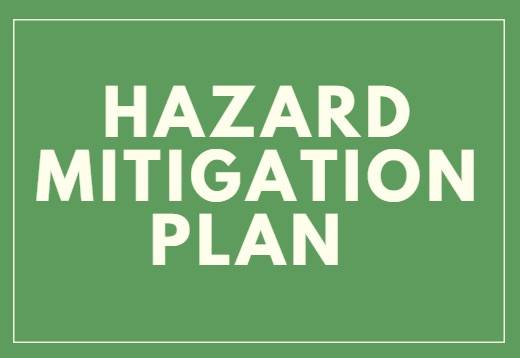Houston County Hazard Mitigation Plan Update

By Will Johnson
Messenger Reporter
HOUSTON COUNTY – When disaster strikes, people often look to their elected or appointed officials for assistance. These officials are expected to have answers as to what to do when an emergency situation arises and to put a plan in place to help with prevention and recovery.
To be effective, a hazard mitigation plan needs to be developed beforehand so governmental officials will have a roadmap to know what steps to take to lessen the impact of the trouble spots.
The Federal Emergency Management Agency (FEMA) states, “Hazard mitigation planning reduces loss of life and property by minimizing the impact of disasters. It begins with state, tribal and local governments identifying natural disaster risks and vulnerabilities that are common in their area. After identifying these risks, they develop long-term strategies for protecting people and property from similar events. Mitigation plans are key to breaking the cycle of disaster damage and reconstruction.”
On Wednesday, July 14, Houston County held a public meeting – via webinar – to gather public input for updating their Hazard Mitigation Plan. The plan includes Houston County, the cities of Crockett, Grapeland, Kennard, Latexo, Lovelady, Crockett ISD, Latexo ISD, Consolidated WSC, Houston County WCID #1, and Houston Electric Cooperative.
“The purpose of the public meeting was to provide a project overview from H2O Partners, Inc., consultant to the project, and solicit information from citizens. Public input will help the project team to analyze potential hazards affecting residents and recommend possible actions to reduce their impact. Hazards included are flood, dam failure, tornado, thunderstorm wind, drought, hail, wildfire, winter storm, earthquake, lightning, extreme heat, and hurricanes/tropical storms,” the H2O firm stated.
The webinar was facilitated by H2O Mitigation Specialist Heidi Watson who opened her presentation with an overview of the “life cycle” of a disaster.
She indicated there were several areas involved including: preparedness, response, recovery and mitigation.
“For example, let’s say we have a low water crossing. The forecast calls for rain and you know for certain the road will soon be covered by water. You can do several things to prepare for this including putting up barriers to keep motorists from driving into the water. The response part can happen during or immediately after it occurs. The response part could be rescuing a motorist who got caught in the flood waters,” she said.
“Now,” she continued, “let’s say the rainstorm is over and the flooding has subsided. You notice the road has been washed away and needs repair. This occurs during the recovery phase. You put the road back to how it was. The last stage is mitigation. You can take steps to prevent this road from flooding in the future by installing a culvert so the waters can flow underneath the road rather than flooding and washing the road away.”
Watson said the four phases of the mitigation update process are: organize, assessment, mitigation strategy and implementation.
The organizing phase includes developing the planning area, working with the planning team and performing public outreach. This phase includes identifying stakeholders that would be affected by the plan’s update, with Watson listing DETCOG and the Texas Forest Service as examples, in addition to the general public, neighboring communities and local businesses.
“Phase Two is the assessment phase. A capability assessment has been given to each of the participating jurisdictions to fill out and measure the capabilities they already have to implement hazard mitigation projects as well as identifying plans, procedures and policies they already have in place,” she said.
Watson continued, “As part of the assessment phase, we do a hazard or risk analysis. We will identify the natural hazards that are prevalent within the planning area. A risk analysis will be completed on each identified hazard which will include a description of the hazard, historical occurrences of the hazard within the planning area and the extent or magnitude that the planning area can expect of that hazard.”
The next phase is developing mitigation action “… developed to reduce the threat. These projects are the heart of the mitigation plan. There are four categories of mitigation action: local plans and regulations, structural and infrastructure projects, natural resource protection and public education and awareness. The reason the type of project is important is because FEMA requires that there be at least two actions for each hazard addressed within the plan, and they must be of two different types,” she said.
Phase Four is the implementation of the plan and goes through how each participating jurisdiction will implement, monitor progress and maintain the hazard mitigation plan.
Watson indicated once FEMA approves the mitigation plan, the county and the jurisdictions participating in the plan may apply directly to FEMA for certain grant funding. She said that the planning team will continue to meet periodically to determine any needed changes to the plan. While the hazard mitigation plan must be formally updated every five years, it can be amended anytime.
“The purpose of this public outreach is to inform and educate the public and stakeholders about the hazards, invite interested parties to contribute their views and ideas for mitigation projects and provide data and information that improves the quality and accuracy of the mitigation plan. You are the ones who live in the community, so you know what projects may need to be done.”
For more information on the hazard mitigation plan, please contact Heidi Watson at [email protected].
Will Johnson may be contacted via e-mail at [email protected].






